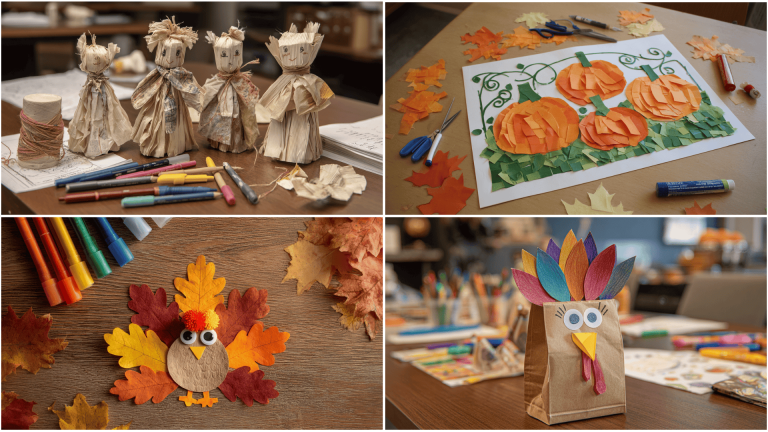Best Winter Sensory Activities to Spark Creativity

Frosty mornings beckon! When snowflakes dance outside your window, it’s time to awaken those senses with magical winter play.
Imagine tiny fingers exploring icy treasures, noses catching the scent of pine and cinnamon, and eyes widening at sparkling snow globes.
Winter offers unique opportunities to engage all five senses in ways that summer simply cannot.
From kitchen-table snow dough to vanilla-scented cloud dough, these activities create memories while developing crucial sensory connections.
Perfect for indoor days when blustery winds howl, these hands-on experiences keep little minds busy and growing.
So gather your mittens and imagination! These winter sensory plays promise giggles, discovery, and development while keeping kids cozy indoors.
What Are Winter Sensory Activities?
Winter sensory activities are playful experiences that engage a child’s senses, touch, sight, sound, smell, and sometimes taste, using materials and elements related to the winter season.
These activities help children find out and learn about the unique textures, temperatures, and sounds that winter brings, all while encouraging curiosity and creativity.
During winter, sensory play often involves cold and natural elements like snow and ice, which provide a different sensory experience compared to other seasons.
Some common sensory elements found in winter include:
-
Snow: The soft, cold, and sometimes powdery texture of snow is a rich sensory experience for kids. They can touch, squeeze, and even taste snow safely while learning about its unique properties.
-
Ice: Smooth and slippery, ice adds a different tactile sensation. Ice cubes or frozen objects can be used indoors in sensory bins or for creative play, like ice painting.
-
Cold Textures: Besides snow and ice, winter brings other chilly textures, such as frosted leaves, cold metal surfaces, and crisp pine needles, all of which stimulate the sense of touch.
-
Sounds of Winter: The crunch of snow underfoot, the whistle of cold wind, or the quiet stillness of a snowy day offer rich auditory experiences that children can listen to and learn from.
These sensory elements make winter a special time for kids to find out, helping them develop their senses while having fun in the season’s unique environment.
Why Do Sensory Activities Matter in Winter?

Sensory play is essential for a child’s development all year round, but it becomes especially important during the cold winter months.
As outdoor playtime often gets limited due to chilly weather, kids need creative ways to stay active and engaged.
Sensory activities help fill this gap by providing meaningful, hands-on learning experiences that support their growth and keep them entertained.
During winter, sensory play supports key areas of child development:
-
Boosting Brain Development: Exploring different textures, temperatures, and sounds helps children build strong neural connections, improving their cognitive skills.
-
Enhancing Motor Skills: Handling cold, slippery, or soft materials challenges kids’ fine and gross motor skills, promoting coordination and control.
-
Encouraging Creativity and Curiosity: Winter sensory activities spark imagination by encouraging children to experiment with new materials like snow, ice, and cozy fabrics.
-
Supporting Emotional Well-Being: Sensory play can be calming and comforting, which is especially helpful during the darker, colder days of winter when some kids might feel restless or cooped up.
Winter sensory activities are versatile and can be done both indoors and outdoors, helping kids stay engaged regardless of the weather:
| Location | Description |
|---|---|
| Indoors | When it’s too cold or snowy to play outside, sensory bins filled with fake snow, warm textures, or scented materials like cinnamon create a cozy, stimulating environment. |
| Outdoors | On milder winter days, kids can find out the natural world by touching snow, listening to the crunch underfoot, or collecting winter treasures like pine cones and frosted leaves. |
By incorporating sensory activities into winter playtime, parents and caregivers can ensure kids remain active, curious, and happy throughout the season.
Top 15 Winter Sensory Activities for Kids
Winter offers so many exciting sensory experiences for children to explore. These activities help kids engage their senses while having fun indoors or outdoors.
Here’s a detailed list of 15 winter sensory activities, with materials and instructions for enjoying each one.
1. Snow Touch and Feel

There’s nothing quite like the feeling of fresh snow! Let kids scoop, squeeze, and mold snow to discover its soft, cold, and sometimes powdery texture.
This hands-on play encourages tactile learning and fine motor skills development. Always make sure kids are bundled up warmly when playing outside.
Materials Needed:
- Fresh snow (outdoors)
- Gloves and warm clothing
2.Ice Cube Painting
This creative activity combines sensory play with art. Freeze colored water in ice cube trays with popsicle sticks.
Kids use the frozen cubes to paint on paper or outside surfaces. Watching the ice melt and colors blend adds a cool sensory twist to painting.
Materials Needed:
- Ice cube trays
- Food coloring
- Popsicle sticks
- Thick paper or cardboard
3. Sensory Bin with Fake Snow

Create a winter wonderland indoors by filling a bin with fake snow or snow dough made from baking soda and conditioner.
Add small winter-themed toys like plastic animals, pine cones, or mini snowmen to spark imagination and tactile exploration.
Materials Needed:
- Fake snow or homemade snow dough
- Small winter toys
4. Nature Scavenger Hunt

Take a winter walk to collect natural items such as pine cones, frosted leaves, and twigs. Back inside, kids can touch, smell, and sort their finds.
Learning about different textures and the outdoor environment. This activity encourages observation and sensory awareness.
Materials Needed:
- Basket or bag
- Natural outdoor items
5.Snow Dough Creations

Mix baking soda and hair conditioner to create soft, moldable snow dough that feels like real snow but won’t melt.
Kids can shape and squish it inside without getting cold hands, perfect for sensory play on chilly days.
Materials Needed:
- Baking soda
- Hair conditioner
6. Frozen Treasure Hunt

Freeze small toys inside ice cubes or larger blocks of ice. Kids use warm water, droppers, or safe tools to melt the ice and “rescue” the treasures.
This activity develops problem-solving skills and sensory exploration of cold and texture.
Materials Needed:
- Small toys
- Water and containers for freezing
- Warm water or plastic tools
7. Winter Sound Walk

Go on a quiet walk outside and focus on the unique sounds of winter — crunching snow, wind blowing through trees, or birds chirping.
This activity sharpens listening skills and helps kids connect with their environment through sound.
Materials Needed:
-
Outdoor winter setting
8. Warm Water Sensory Play

Fill a basin with warm water, adding food coloring or winter scents like peppermint or pine essential oils. Kids enjoy pouring, splashing, and smelling, which is a comforting contrast to cold outdoor temperatures.
Materials Needed:
- Basin or bowl
- Warm water
- Food coloring or essential oils
- Cups and spoons
9. Cotton Ball Snowball Toss

Use soft cotton balls as pretend snowballs for indoor tossing games. Kids practice hand-eye coordination and motor skills while having safe, mess-free fun.
Materials Needed:
- Cotton balls or soft pom-poms
- Buckets or baskets
10. Snowflake Cutting and Crafting

Folding and cutting paper into snowflakes helps kids practice fine motor skills and introduces concepts like symmetry and pattern recognition. It’s also a fun seasonal craft to decorate the home.
Materials Needed:
- Paper
- Child-safe scissors
11. Ice Painting on Windows

Freeze colored water into ice cubes and let kids use them to paint on windows or glass doors. As the ice melts, colors blend and drip, creating a beautiful and ever-changing winter scene.
Materials Needed:
- Ice cubes
- Food coloring
- Windows or glass surfaces
12. Pine Cone Sensory Play

Pine cones provide an interesting, rough texture for kids to find out with their hands. You can also add a crafting element by letting children paint or decorate the cones with glitter.
Materials Needed:
- Pine cones
- Paint and glitter (optional)
13. Ice Sensory Bin with Natural Objects

Fill a bin with ice cubes and natural outdoor materials like leaves, twigs, and small stones. Kids can find out about cold and hard textures while interacting with elements from nature.
Materials Needed:
- Ice cubes
- Leaves, twigs, stones
- Large plastic bin
14. Indoor Snowman Building

Use cotton balls, buttons, felt, and glue to build a soft, indoor snowman. This activity mimics the outdoor experience and encourages creativity without the cold.
Materials Needed:
- Cotton balls
- Felt scraps
- Buttons and glue
15. Ice Cube Relay Race

Set up a game where kids use spoons or tongs to carry ice cubes from one container to another. The cold sensation adds an extra challenge, while the activity promotes coordination and focus.
Materials Needed:
- Ice cubes
- Containers
- Spoons or tongs
These winter sensory activities are easy to set up and perfect for sparking curiosity, creativity, and development while embracing the season’s unique qualities.
Tips for Safe Winter Sensory Play
Keeping kids safe during winter sensory activities is key to making playtime fun and worry-free. Here are some easy tips to help you create a safe and enjoyable experience.
1. Dress Kids in Warm Layers – Use multiple layers, waterproof gloves, hats, and boots to keep children warm and dry outdoors.
2. Limit Outdoor Playtime – Monitor the temperature and keep outdoor sessions short to avoid cold-related risks like frostbite.
3. Choose Safe, Non-Toxic Materials – Use child-safe supplies for all sensory activities to prevent allergic reactions or poisoning.
4. Supervise at All Times – Always watch children closely, especially when they play with ice, small objects, or messy materials.
5. Provide Frequent Warm-Up Breaks – Bring kids inside regularly to warm up and hydrate, ensuring they stay comfortable and healthy.
Conclusion
As winter’s embrace surrounds us, these sensory activities offer more than entertainment; they provide essential developmental building blocks.
Through finding out different textures, scents, and sights of the season, children develop crucial neural pathways while creating treasured memories.
Winter sensory play bridges the gap between indoor confinement and outdoor wonder, bringing nature’s gifts inside when the world turns white.
As you watch little faces light up with discovery, you’ll find yourself rediscovering winter’s simple joys, too.
So, embrace the season’s unique sensory opportunities; they’ll warm your home with laughter long after the snow melts away.







